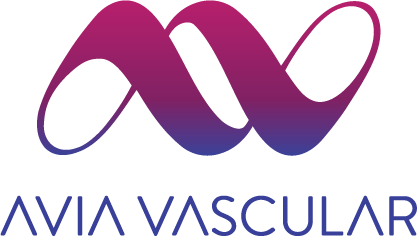As the world of healthcare continues to advance, traditional blood collection methods are being challenged by new, innovative products to address common challenges with frequent procedures. Traditional blood collection methods have long been standard, however their associated issues present implications that extend beyond the immediate act of drawing blood. These challenges contribute to increased costs, inefficiencies, and patient and staff dissatisfaction. Let’s explore the critical issues linked to traditional vascular access and how Avia Vascular’s products, The Ally and The Stiletto, offer effective solutions to these problems.
Increased Cost
One of the most glaring issues with traditional blood collection methods is the substantial increase in healthcare costs. Longer hospital stays and the need for additional supplies inflate overall expenses. Redraws, another common concern, often leads to the use of additional materials and treatment and discharge delays, compounding costs related to blood draws. This financial burden often cascades down to patients, insurance companies, and healthcare institutions. For patients, it can mean higher out-of-pocket expenses, while for insurance companies and healthcare providers, it translates to increased operational costs. Avia Vascular’s Ally, a needle free blood collection device, addresses this issue by reducing the need for multiple needle sticks and additional supplies, ultimately lowering costs associated with traditional methods.
Decreased Turnaround Times on Beds
Efficient hospital workflows are crucial for maintaining high standards for patient care and satisfaction. However, delays in blood collection can create bottlenecks that significantly reduce bed turnover rates. When beds are occupied longer than necessary, it limits the hospital’s ability to admit new patients promptly. This reduction in efficiency not only effects patient satisfaction but also hinders the hospital’s capacity to provide timely care. The Ally decreases the need for multiple needlesticks and redraws, promoting more efficient care and patient throughput with its simple process.
Difficult of Forecasting
Accurate forecasting in blood collection is essential for planning and resource allocation. However, traditional methods often lead to unpredictable time requirements for each patient. Phlebotomists, the healthcare professional tasked with drawing blood, face challenges in scheduling their day effectively. The time needed to collect a suitable sample can vary drastically – from three minutes to half an hour – making it difficult to manage workloads efficiently. The Ally device simplifies this process by providing a consistent and efficient method of blood collection, helping to standardize the time required for each draw and improve scheduling accuracy. The Ally allows for access through an existing PIV line, reducing the need for additional needle-sticks and decreasing redraw attempts.
High Phlebotomist Turnover Rates
Phlebotomists play a vital role in the healthcare system, but they often face frustration due to the challenges of traditional blood collection methods. High turnover rates among personnel are a direct consequence of this frustration, exacerbated by negative patient interactions. This turnover can lead to a shortage of skilled employees, further affecting the quality of patient care.
Patient Discomfort and Anxiety
Multiple needles sticks and the associated pain can lead to physical patient discomfort and anxiety. These feelings can make patients reluctant to undergo necessary blood tests, potentially delaying critical diagnosis and treatment. Anxiety and negative experiences can also impact their overall perception of healthcare services, leading to distrust and dissatisfaction. The Ally significantly reduces the pain and discomfort associated with blood draws, while The Stiletto minimizes the need for repeated needle insertions, both of which help improve patient comfort while preserving vessels.
Conclusion
Traditional blood collection methods present several challenges that have far-reaching implications for the healthcare system. Addressing these issues requires innovative solutions that can streamline blood collection methods, improve efficiency, reduce costs, and enhance patient and staff satisfaction. Avia Vascular’s Ally and Stiletto devices exemplify such innovations offering effective solutions to the problems associated with traditional blood collection methods and offer a resource for vessel preservation. At Avia Vascular, we are committed to advancing vascular access through innovative technologies. Through our advancements, we can provide a better healthcare experience for our patients and professionals. Learn more about our mission toward vessel preservation through innovative vascular access devices at https://avia-vascular.com/
